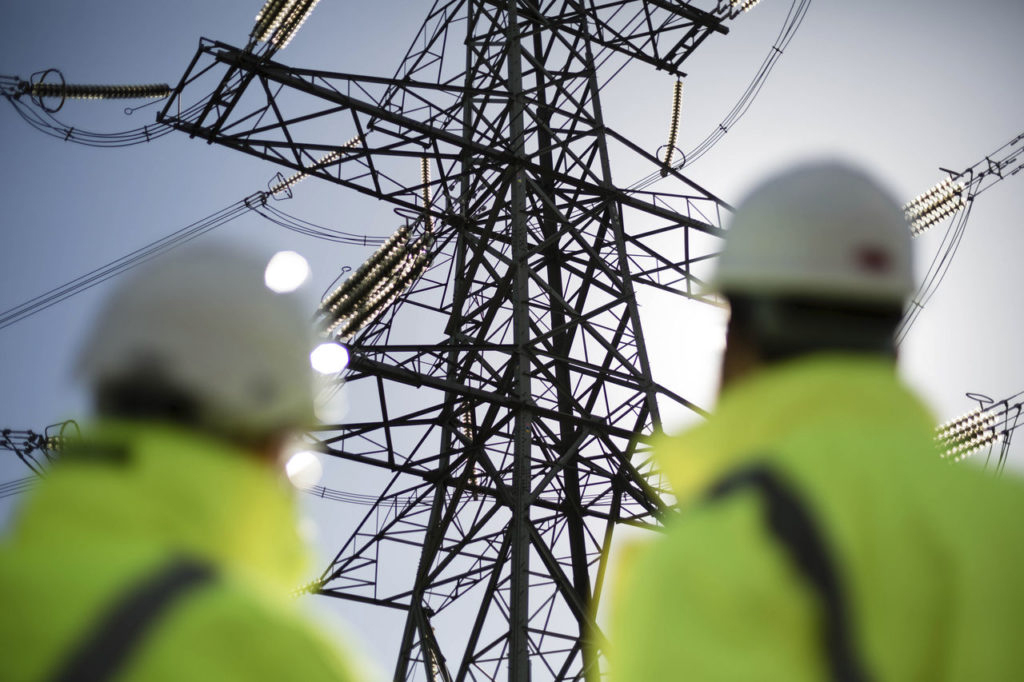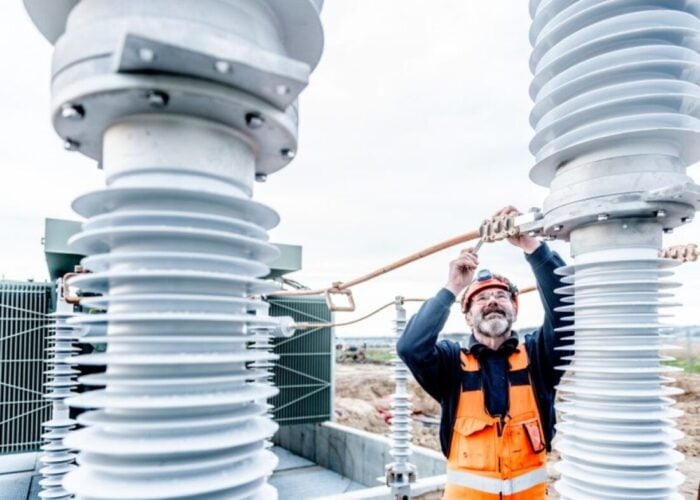
In the last installment of our special feature on Europe’s solar market, we take a look at the challenges and hurdles that remain and, crucially, how the solar sector can overcome them.
While the preceding posts have outlined the sheer scale of the opportunity within Europe’s solar PV sector across the value chain, a number of common hurdles have emerged and for solar to truly fulfil that potential, the solar and wider energy economies must overcome these.
Unlock unlimited access for 12 whole months of distinctive global analysis
Photovoltaics International is now included.
- Regular insight and analysis of the industry’s biggest developments
- In-depth interviews with the industry’s leading figures
- Unlimited digital access to the PV Tech Power journal catalogue
- Unlimited digital access to the Photovoltaics International journal catalogue
- Access to more than 1,000 technical papers
- Discounts on Solar Media’s portfolio of events, in-person and virtual
Grids have, predictably, been identified as a near universal source of ire for the utility-scale solar industry and the one that poses the biggest threat to the technology’s dominance of power markets going forward. Decades-old infrastructure is struggling to keep up with an avalanche of modern, sophisticated power generators that disrupt the status quo and, as a result, new grid connections have ground to a slow, if not a complete halt.
Heymi Bahar, senior analyst for renewable energy markets at the International Energy Agency, says that the biggest issue remains that a large amount of renewable energy deployment activity, but grid deployment activity fails to match it. This, Bahar says, has been a “big challenge for Europe”. Expanding grids, both at the distribution and transmission level, is considerably costly, and those costs are often borne by grid operators but passed onto consumers via levies on utility bills, additions which are politically contentious.
Furthermore, gaining permits for what can essentially boil down to huge quantities of tall pylons and thick cables can not only be difficult, but can also elicit uproar from local residents. The ‘not in my back yard’ types – or NIMBYs as they’ve come to be christened – are not only contesting planning applications for solar sites, but the infrastructure necessary to accommodate them too.
Bahar adds that difficulties in obtaining grid connection agreements has been a prevalent issue for wind and solar assets in northern Germany for some time, while speaking at PV Tech Power publisher Solar Media’s Large Scale Solar Europe conference in April 2021, Berto Martins director for electricity markets at utility EDP Portugal, spoke of constraints throughout the Iberian peninsula – a hotbed for solar deployment activity moving forward.
The crux of the matter is that solar, and indeed other renewables, are just moving too fast for the grid to keep up. “The pace of building wind or solar plants is much, much faster than building the grid,” Bahar says, a problem that is worse in emerging economies where some project developers have built renewables projects but not been able to connect them. Frank Niendorf, general manager for Europe at JinkoSolar, says that grid infrastructure project lead times are often in the five to 10-year range, creating significant bottlenecks for solar project development.
Furthermore, the problem is not confined to or felt more acutely in either the transmission or distribution grid, but felt equally across the two, with Bahar adding that growth in distributed solar exacerbating the issue even further.
Martins is of the opinion that the first step will be to determine whose job grid expansion is anyway.
Moving beyond ‘T’ versus ‘D’
“The topic here should be how to establish the adequate level of responsibility. Until now, we have – in my opinion – faced arguments over who will be responsible for which grid,” Martins said during the LSS Europe event. His view was echoed by Randolph Brazier, director of innovation and electricity systems at the Energy Networks Association, a UK-based trade body representing network operators. “We need to get out of this competition mode of ‘T’ versus ‘D’, and networks arguing each other. If we want to meet our net zero targets, we don’t have time to waste. We need much deeper collaboration between transmission and distribution, and we very much need to take a whole systems approach. That needs to be driven not just from the networks themselves, but also by the policy and regulation they work under,” Brazier said.
The UK’s network operators are all run as monopolies and licensed by government-appointed industry regulator Ofgem. Their expenditure is carefully controlled and vetted, with additional license conditions dictating that any action or intervention considered must also be measured against potential consequences further down the network, ensuring a whole systems approach is front and centre. Martins added this was being particularly felt in Iberia, where grid connection requests have soared to unmanageable levels. As a result, authorities in Spain and Portugal in particular are understood to be experiencing difficulties assessing the impact on local grids of multiple connection requests. Martins said that while in the past the transmission and distribution grids – both of which can accommodate renewable power connections – have needed to be viewed separately, technology advancements and more modern approaches have enabled them to be viewed together, potentially finding areas of the grid where more renewables could be accommodated.
“The growth of storage solutions… will help lead to, let’s say, a more decentralised electricity generation system, and consequently, take some pressure off the shoulders of the grid.”
Frank niendorf
There have also been recent moves to identify and create additional grid capacity for renewables throughout some of Europe’s key markets. In the UK, transmission system operator National Grid Electricity Transmission (NGET) recently revealed a trial it was undertaking of power flow control technology at three substations with the aim of unlocking 1.5GW of grid capacity. Meanwhile, Portuguese grid operator Redes Energéticas Nacionais committed in May 2021 to invest some €900 million (US$1.1 billion) in various grid reinforcements to accommodate new renewables projects. JinkoSolar’s Niendorf says the growth of energy storage will also be a gamechanger, driven by cost reductions in the technology that will help the asset class become an alternative to the grid. “The growth of storage solutions… will help lead to, let’s say, a more decentralised electricity generation system, and consequently, take some pressure off the shoulders of the grid,” he says.
These improvements are, however, perhaps too isolated to truly ease concerns over the grid. Numerous sources spoken to for this piece highlighted the key role legislation passed by the European Commission as part of its coronavirus recovery stimulus can and should play in stimulating grid investments. There are also issues to contend with further up the value chain, ones which are having a very tangible impact on deployment today.
A material world
The solar manufacturing industry has been in recent months by soaring polysilicon prices, continuing a trend first felt towards the end of last year after incidents at a number of facilities in China disrupted global supply. While these incidents have largely been overcome, demand for the material continues to far outstrip, and prices have gone through the roof. As the cost of manufacturing solar modules has increased, purchase prices have had to rise in tandem, threatening project economics across the continent. Project developers spoken to by PV Tech Power remain split, but the general consensus is that some in the sector will be unable to develop at the module price, and projects previously slated for connection in 2021 will be pushed into 2022 when prices are expected to stabilise.
The IEA’s Bahar sees this as a threat particularly pertinent for those participating in Europe’s band of renewables auctions. “Those that are deep into the auctions, betting on lower PV prices… if they had tight margins, then they are in a challenging situation to wait or not to wait,” he says. Portugal’s record-breaking auctions of 2020, which saw prices plummet to low of just €11.14/MWh (US$13.12) spring to mind in particular.
It’s not just modules, either. Steel costs have also soared – tracker manufacturer Array Technologies lamented a doubling in steel costs felt between April 2020 and April 2021, and a further 10% hike felt early in this financial year – while semiconductor shortages are leaving inverter suppliers hamstrung.
But, as Bahar says, given the cost trajectory of solar over the last decade, the industry owes far less to component costs than it used to. “Let’s remember that of the overall system costs modules are just a portion… there are a lot of other things involved. So the impact [of price increases] to a total PV system is not that big,” he adds. Polysilicon prices are also widely expected to peak in July or August this year before normalising into Q2 2022, with huge additions set to come onstream at the start of next year. Any price impact will be in the short- or medium-term, however the prospects for sub-US$0.20c/W modules may perhaps have been revised as a result of the last six months.
Pricing and grid availability may therefore pose threats to solar deployment in the short- or medium-term, but long-term prospects for the technology are significant. The IEA expects north of 20GW of solar to be installed in Europe in each of the forthcoming five years, forecasts matched, if not exceed, by all other analysts. The future is bright for solar in Europe.







